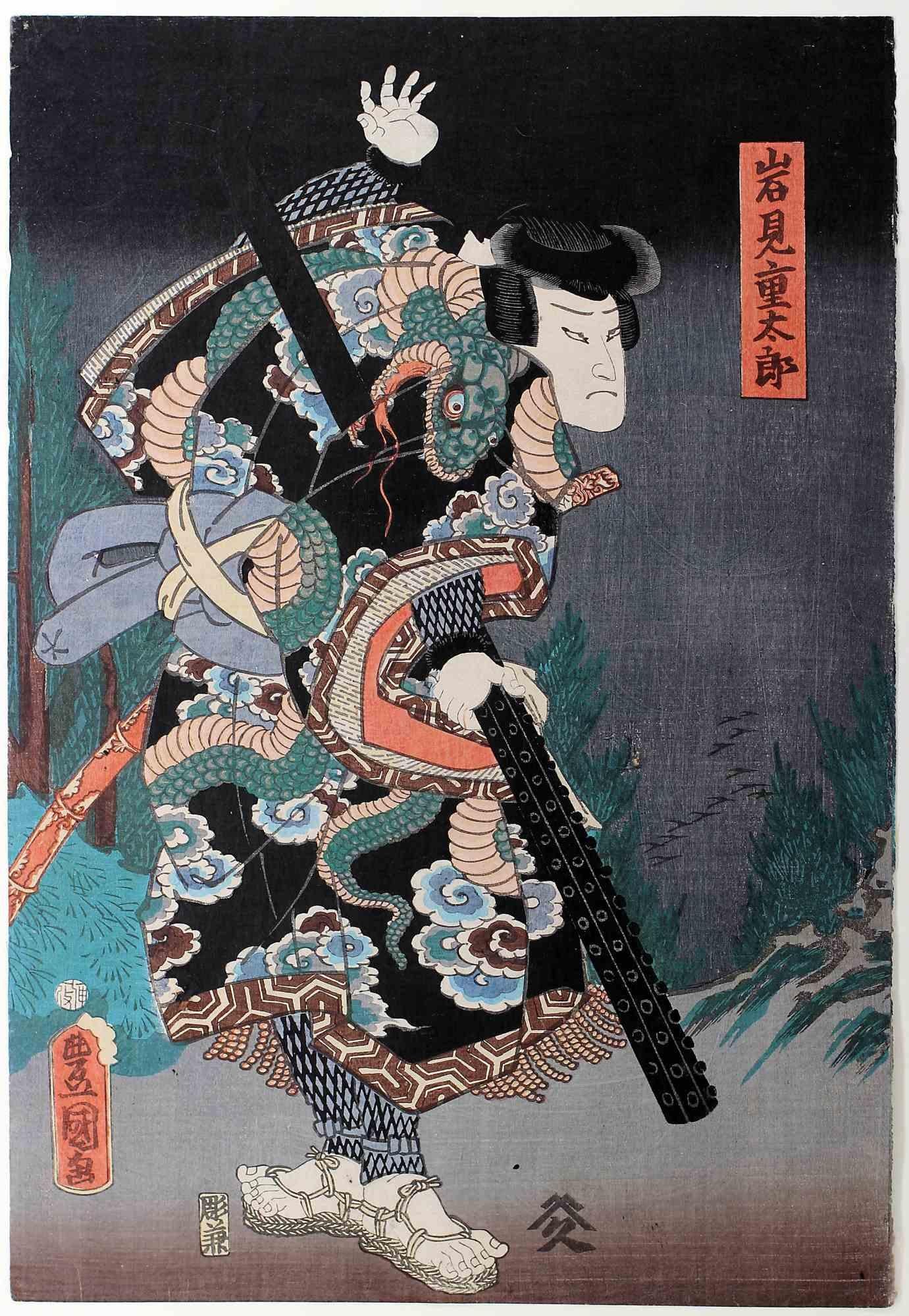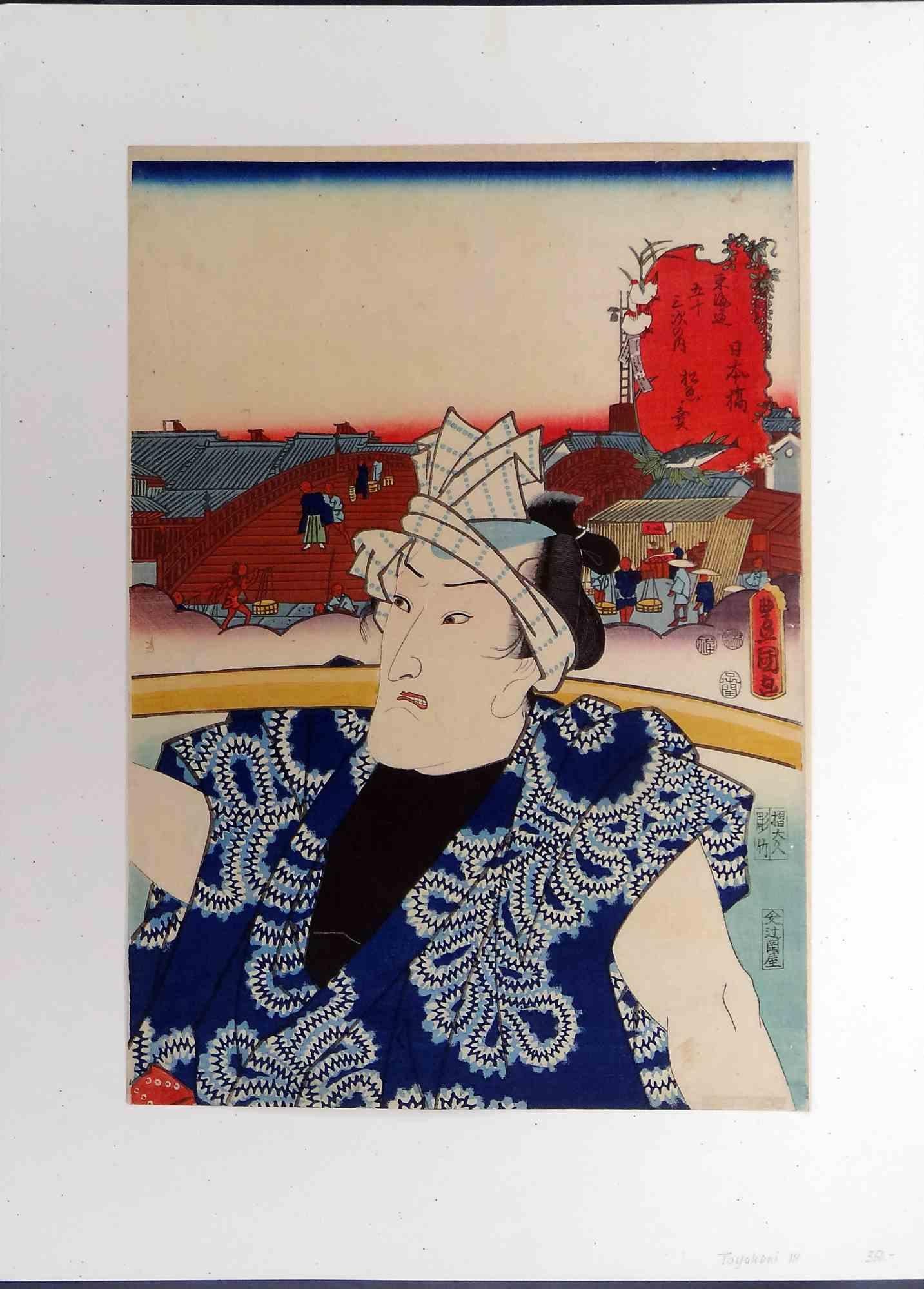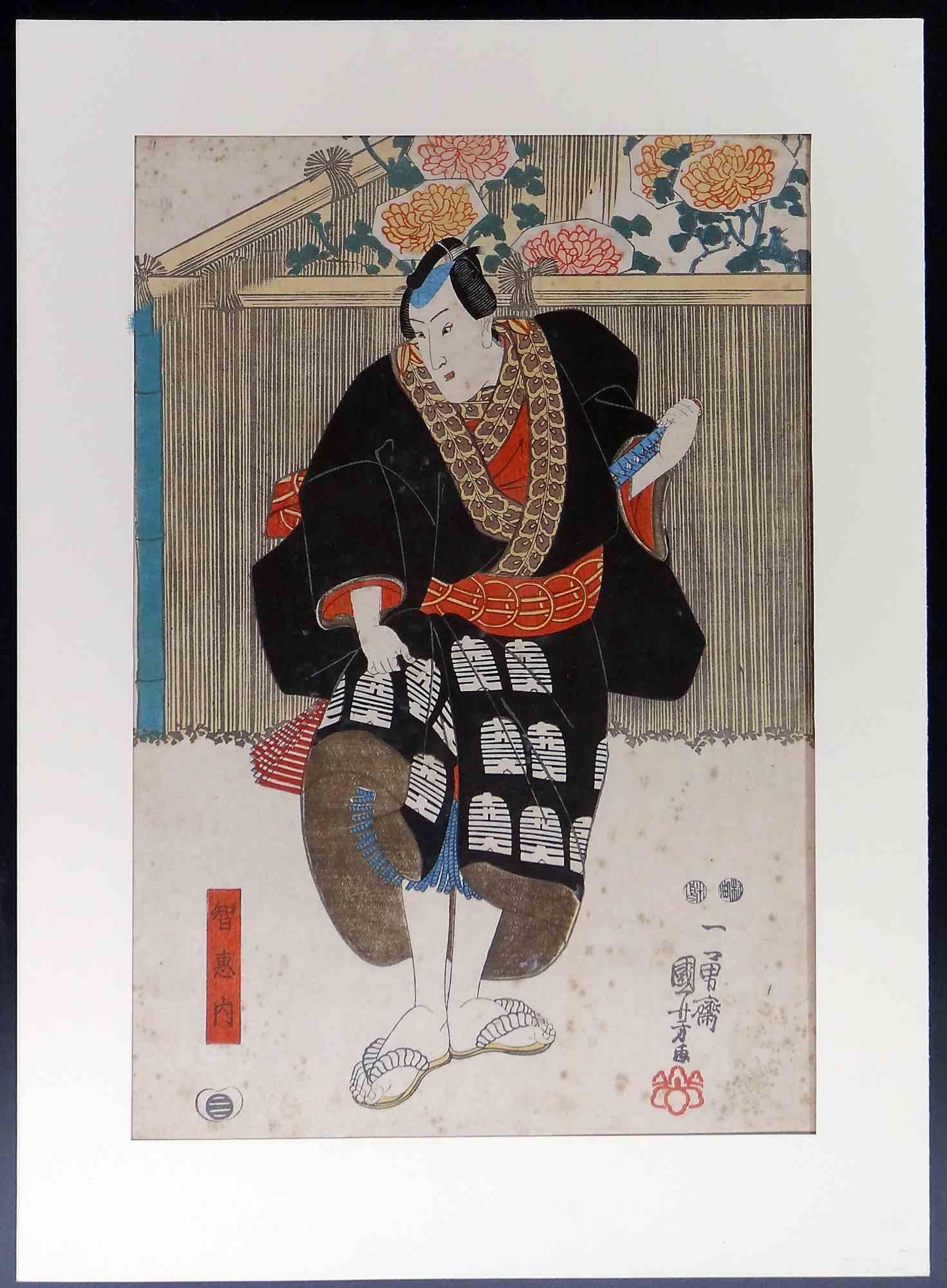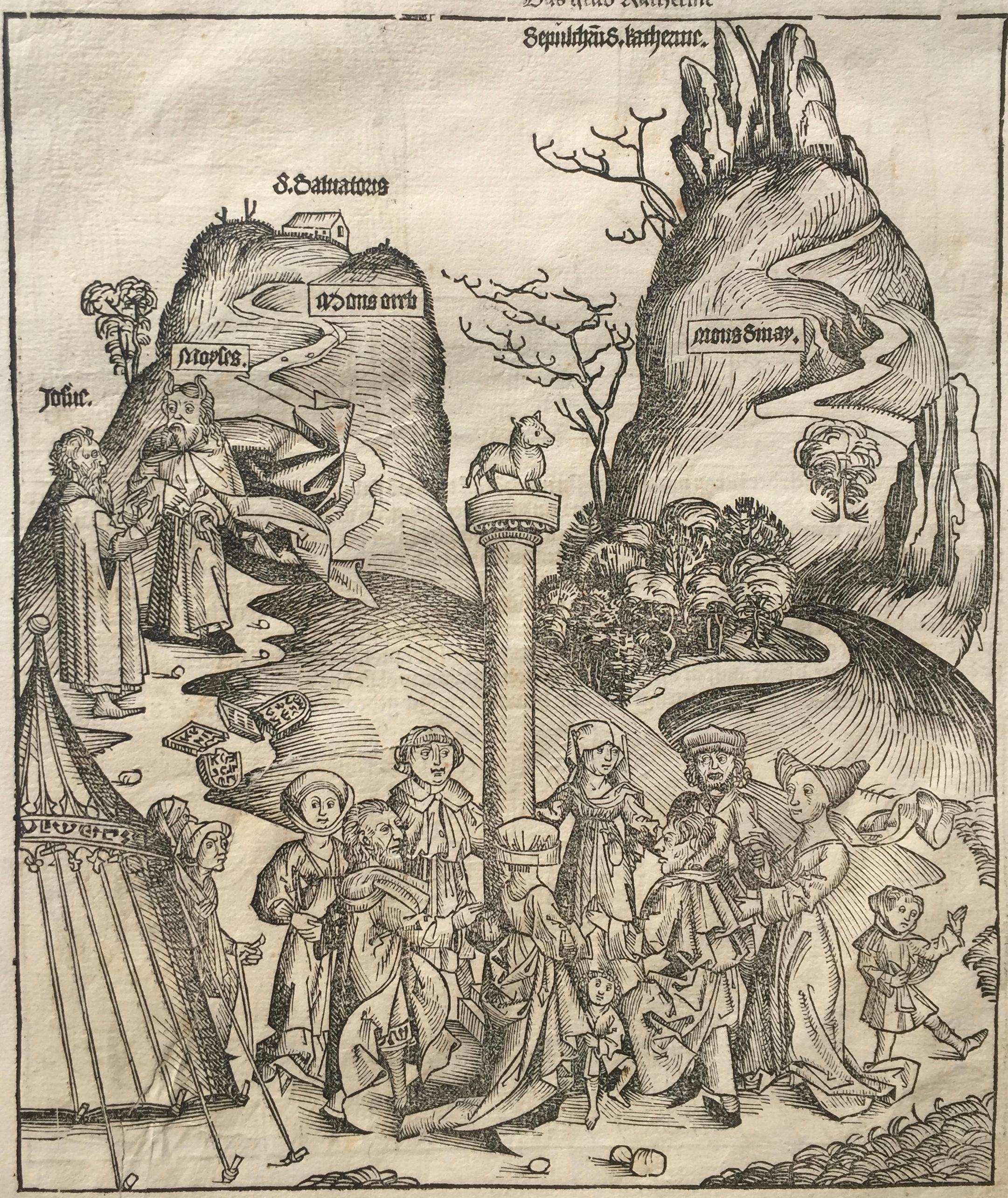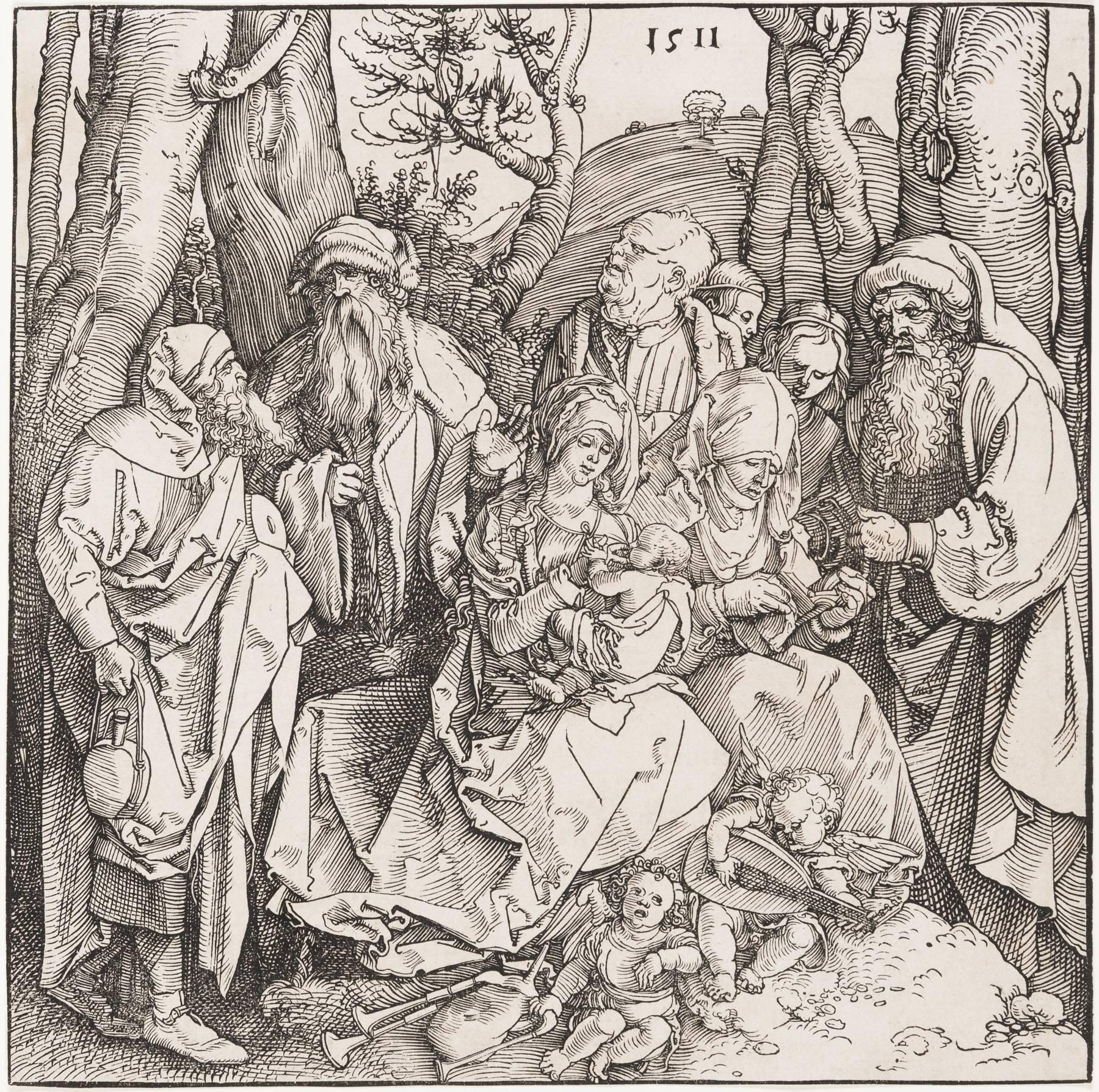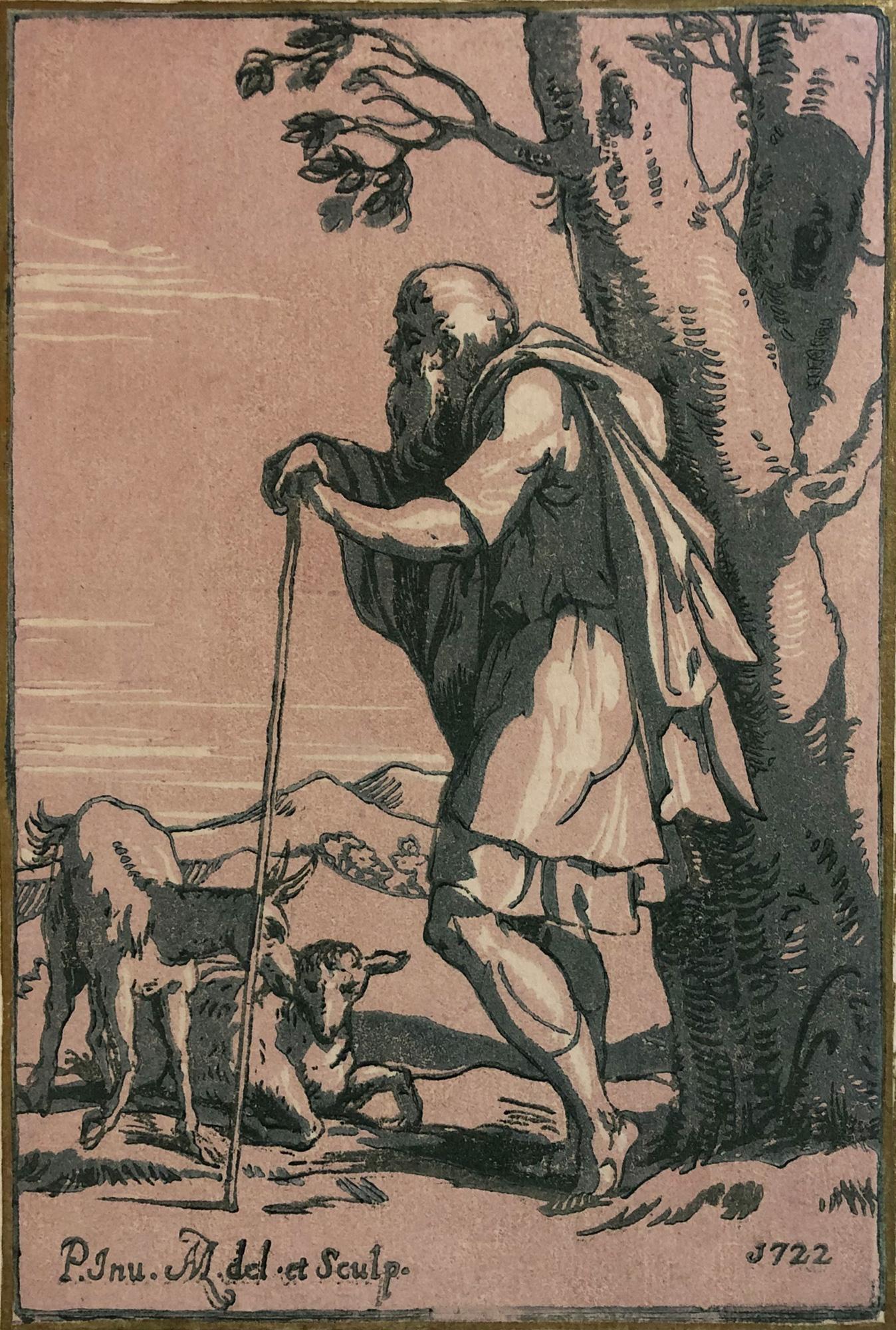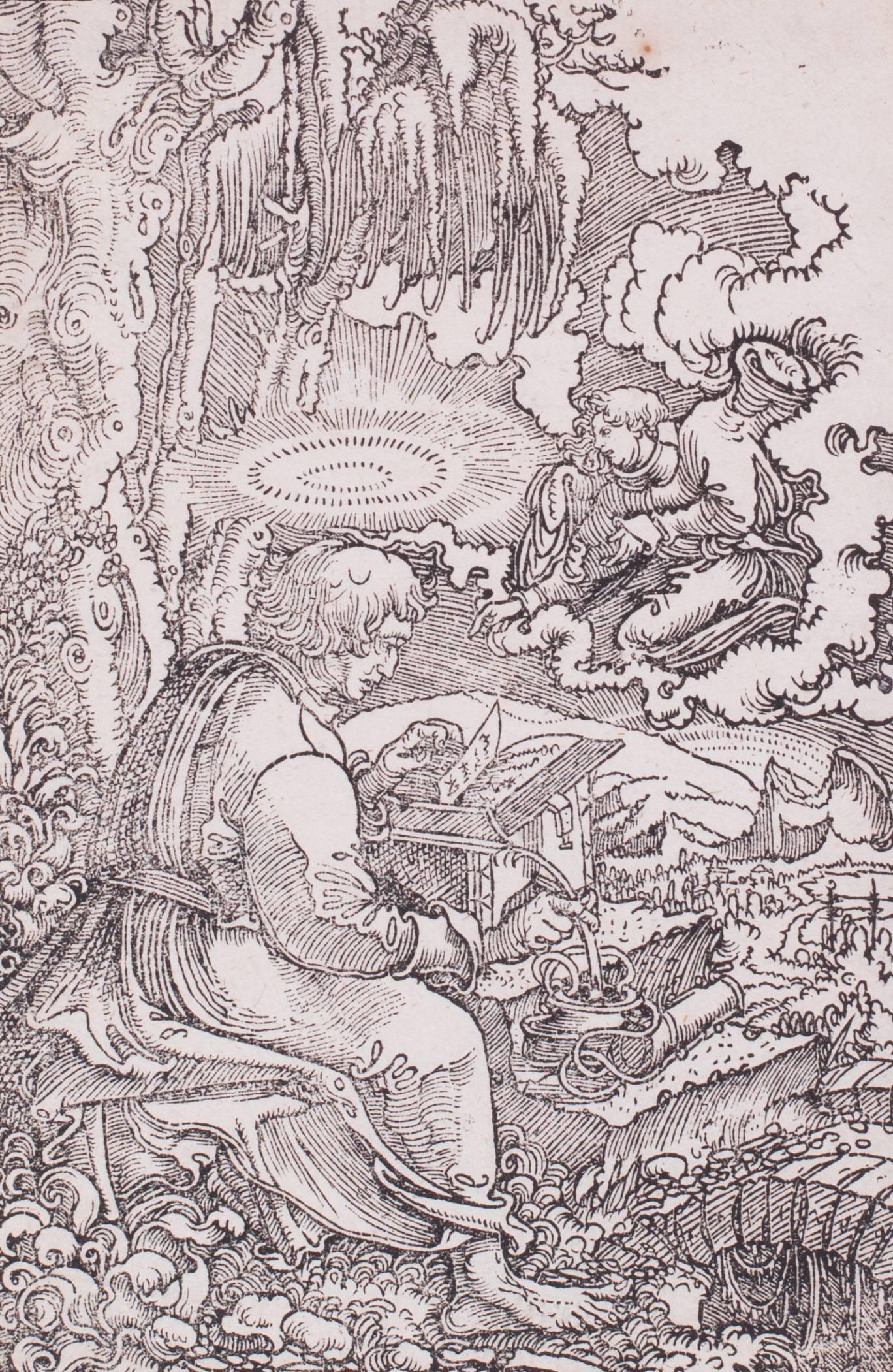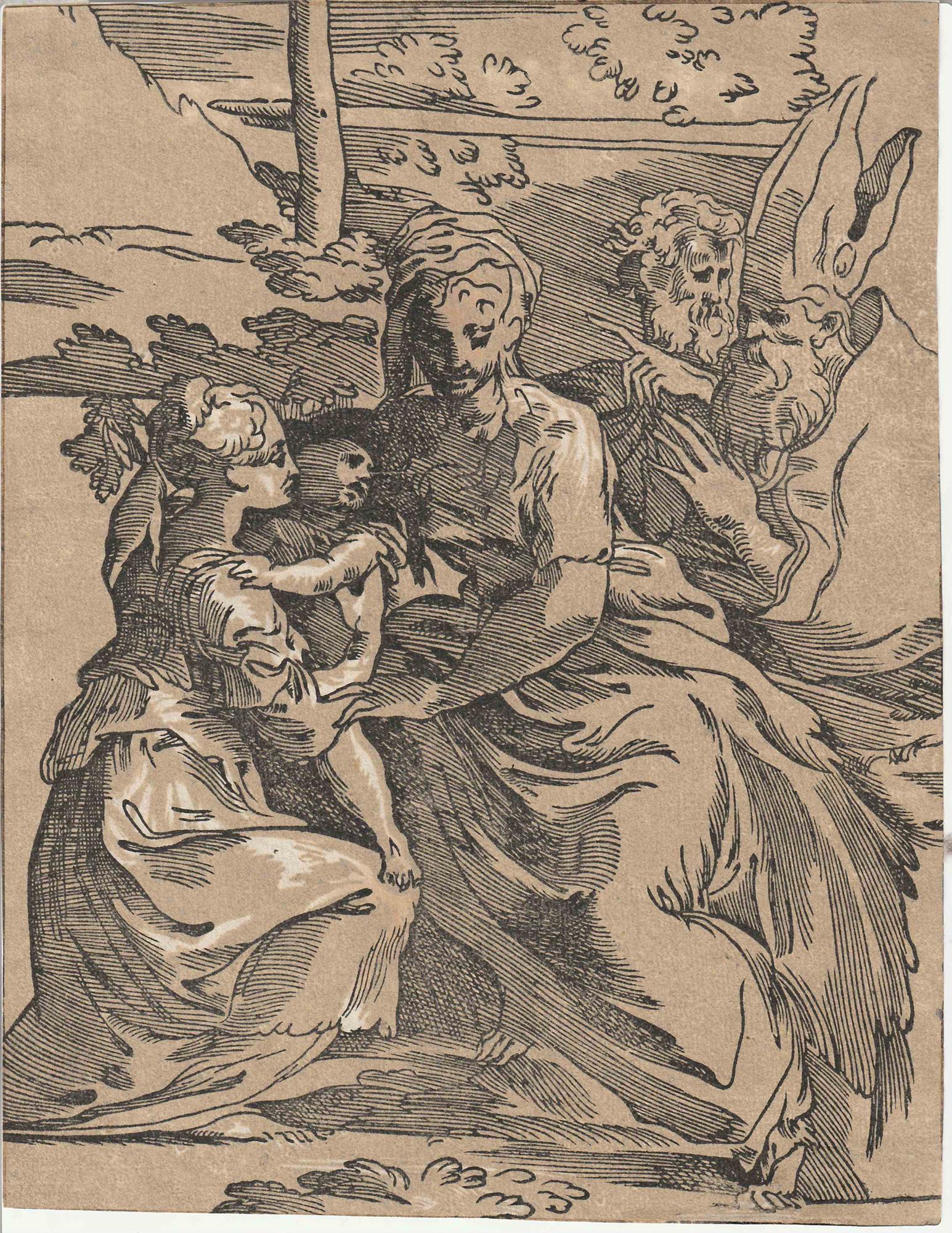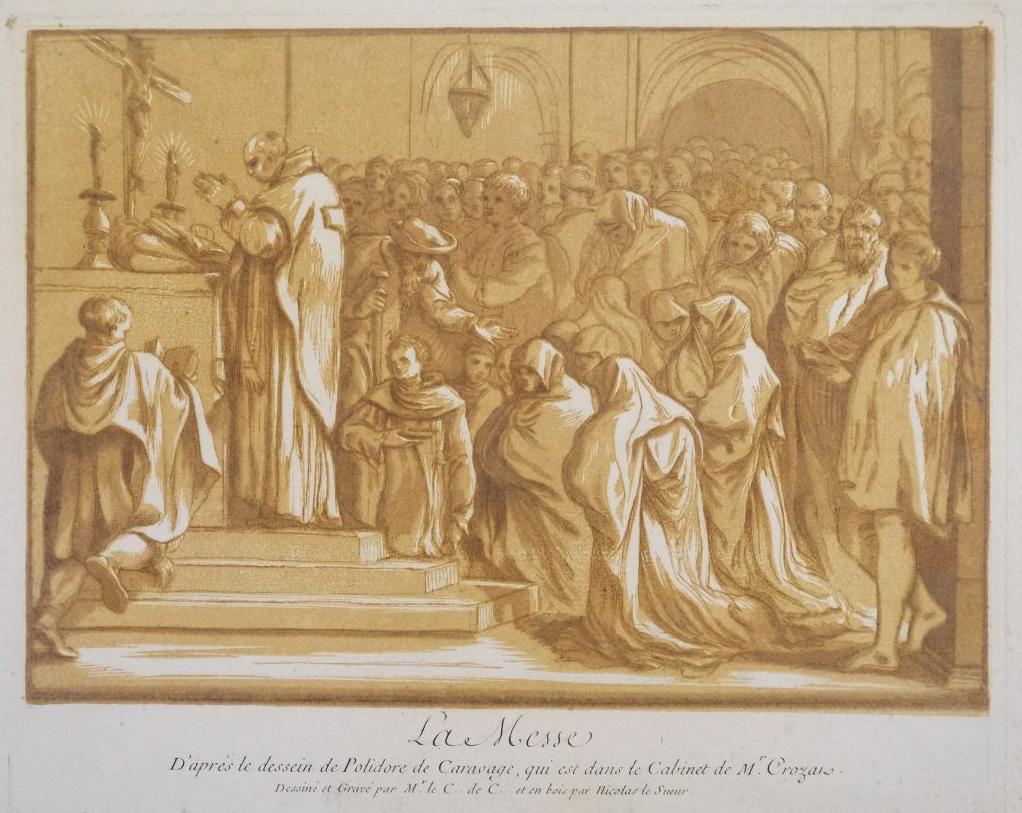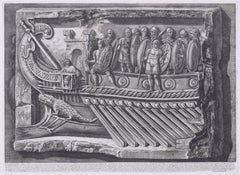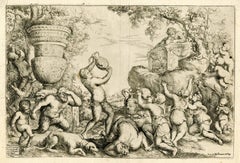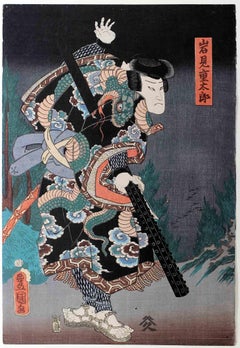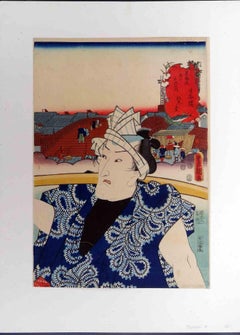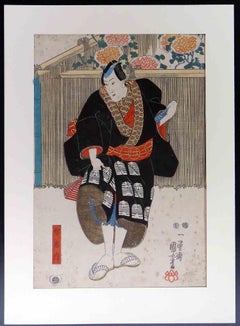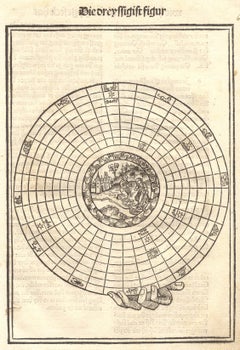
Father Stefan Fridolin, "Schatzbehalter" (Treasury of the True Riches
View Similar Items
Want more images or videos?
Request additional images or videos from the seller
1 of 7
Michel WogelmutFather Stefan Fridolin, "Schatzbehalter" (Treasury of the True Riches 1491
1491
About the Item
- Creator:Michel Wogelmut (1434 - 1519, German)
- Creation Year:1491
- Dimensions:Height: 11.5 in (29.21 cm)Width: 8.25 in (20.96 cm)
- Medium:
- Movement & Style:
- Period:
- Condition:
- Gallery Location:Fairlawn, OH
- Reference Number:Seller: FA50251stDibs: LU1408930032
About the Seller
5.0
Recognized Seller
These prestigious sellers are industry leaders and represent the highest echelon for item quality and design.
Platinum Seller
These expertly vetted sellers are 1stDibs' most experienced sellers and are rated highest by our customers.
Established in 1978
1stDibs seller since 2013
712 sales on 1stDibs
Typical response time: 1 hour
Associations
International Fine Print Dealers Association
More From This SellerView All
- Father Stefan Fridolin, "Schatzbehalter" (Treasury of the True RichesLocated in Fairlawn, OHFather Stefan Fridolin, "Schatzbehalter" (Treasury of the True Riches of Salvation): The 30th Figure - Astrological Diagram with Scene of the Nativity Woodcut, 1491 Unsigned, as issued Published by Anton Koberger Diagram has Zodiac signs on outer ring, planets in the lower registers, and Nativity in the center. Condition: Very good for a 15h century woodcut, with the usual slight age stains Sheet size: 11 1/2 x 8 1/4 inches Wogelmut was the teacher of Albrecht Durer and employed young Durer in many project of the last decade of the 15th century. Michel Wolgemut Biography Wolgemut trained with his father Valentin Wolgemut (who died in 1469 or 1470) and is thought to have been an assistant to Hans Pleydenwurff in Nuremberg. He worked with Gabriel Malesskircher in Munich early in 1471, leaving the city after unsuccessfully suing Malesskircher's daughter for breach of contract, claiming she had broken off their engagement. He then returned to his late father's workshop in Nuremberg, which his mother had maintained since Valentin's death. In 1472 he married Pleydenwurff's widow and took over his workshop;[3] her son Wilhelm Pleydenwurff worked as an assistant, and from 1491 a partner, to Wolgemut. Some consider Wilhelm a finer artist than Wolgemut, however he died in January 1494, when he was probably still in his thirties. Wilhelm's oeuvre remains unclear, though works in various media have been attributed to him. Woodcuts Michael Wolgemut, Danse Macabre, 1493 Two large and copiously illustrated books have woodcuts supplied by Wolgemut and his stepson Wilhelm Pleydenwurff; both were printed and published by Germany's largest publisher, the Nuremberger Anton Koberger, who was also Dürer's godfather. The first is the Schatzbehalter der wahren Reichthumer des Heils (1491); the other is the Historia mundi, by Schedel (1493), usually known as the Nuremberg Chronicle...Category
15th Century and Earlier Old Masters Figurative Prints
MaterialsWoodcut
- Marble relief of a trireme from the Temple of Fortuna, Praeneste, from VasiBy Giovanni Battista PiranesiLocated in Fairlawn, OHMarble relief of a trireme from the Temple of Fortuna, Praeneste, from Vasi, candelabri, cippi, sarcofagi, tripodi, lucerne, ed ornamenti antichi disegnati ed incisi dal Cav. Gio. Ba...Category
1770s Old Masters Figurative Prints
MaterialsEtching
- BacchanalBy Giovanni Andrea PodestàLocated in Fairlawn, OHInscribed in the square left: "Magnificentis/simo Principi/Paolo lorda/no. II Bracci/ani Duci/Aud. P.DDD/1640 Inscribed on right: Rome apud Franciscsum Saluucium Plate: 10 3/8 x 15...Category
18th Century and Earlier Old Masters Figurative Prints
MaterialsEtching
- El Vergponzoso (The Shamefaced One)By Francisco GoyaLocated in Fairlawn, OHEl Vergponzoso (The Shamefaced One) etching & aquatint, 1799 Unsigned (as are all Goya etchings) From: Los Caprichos, Plate 54 From the First Edition, pri...Category
1790s Old Masters Figurative Prints
MaterialsAquatint
- Xylon 21 Naoko Matsubara USALocated in Fairlawn, OHXylon 21 Naoko Matsubara USA Woodcuts, two which are printed in color, 1970 2 of the 5 woodcuts signed in pencil (see photos) Five original woodcuts, two of which are signed in pencil With introduction entitled Honest Pinetree by Frizt Eichenberg The images are: The Quaker’s Meeting, double page woodcut cover on grey/green paper, signed in pencil, with usual centerfold Publisher: Sekton Schweiz de Xylon, Zurich Date: August 1970 Edition: 500 Sylvan Snow, double page woodcut (with usual centerfold), signed in pencil, dedicated and dated, depicting a forest Verso: Dragon, double page woodcut, with usual centerfold, depicting a dragon Indian Dancer, double page woodcut in black and green (with usual centerfold), depicting dancer Verso: Chinese Dancer. woodcut in red, depicting a dancer Condition: Very good, usual handling issues for paper portfolio Centerfolds as issued Signle filio: 19 3/8 x 13 1/2 inches Double folio: 19 3/8 x 27 inches Publisher: Sekton Schweiz de Xylon, Zurich Date: August 1970 Edition: 500 Provenance: Amity Art Foundation, Inc. A rare dedicated example with a dedication in pencil “For Frank” and dated 1970 Note: Matsubara graduated from the Kyoto University of Applied Arts in 1960. She then pursued an MFA in the School of Fine Arts at the Carnegie Mellon University in Pittsburgh on a Fulbright Travel Grant, and since then has traveled extensively and taught at the Pratt Institute in Brooklyn—a rare distinction for a Japanese woman. She also studied one year at the Royal College of Art, London. Currently she lives and works in Oakville, Canada. Naoko Matsubara’s style is influenced by her teacher Munakata Shiko (1903–1975), who worked in the mingei (folk art) tradition. Her works are part of the collections of many museums around the world such as the Philadelphia Museum of Art, the Chicago Art Institute, the Royal Ontario Museum, the Albertina in Vienna, the British Museum in London, the Kyoto National Museum of Modern Art, the Museum of Fine Arts, Boston, the Tokyo National Museum of Modern Art, the Smithsonian Institution and the Library of Congress in Washington, the Hamburg Museum of Arts and Crafts, the Haifa Museum in Israel and the Art Gallery of New South Wales in Sydney. She was made a member of the Royal Canadian Academy of Arts. (Courtesy of Wikipedia) Naoko Matsubara (1937 - ) Matsubara Naoko (松原直子) was born in 1937 on Shikoku Island into an old Shinto family, and grew up in Kyoto, where her father was a senior priest. She was educated at the Kyoto Academy of Fine Art (BFA, 1960); and was a Fulbright Scholar at what is now Carnegie Mellon University, Pittsburgh (MFA, 1962). She was also a Special Invited Student at the Royal College of Art in London (1962). After travelling extensively in Europe and Asia, Naoko Matsubara returned to Japan for two years, before being lured back to the United States. There she worked as personal assistant to the late Prof. Fritz Eichenberg, and also taught at the Pratt Institute of Graphic Art in New York, as well as at the University of Rhode Island. Subsequently she lived in Cambridge, Mass. In 1972 Naoko Matsubara moved to Canada, and now lives in Oakville, Ontario. She has continued to be extremely active as an artist: locally, nationally and internationally. Since 1960 she has had some 75 solo exhibitions, in the USA, Canada, Japan, England, Ireland, Germany, Austria, Switzerland, Holland and Mexico. She has also participated in numerous group exhibitions. Public collections owning work by Naoko Matsubara include: Albertina, Vienna; Art Institute of Chicago; British Museum; Carnegie Institute; Museum für Kunst und Gewerbe, Hamburg; Museum of Fine Arts, Boston; Philadelphia Museum of Art; Cincinnati Art Museum; Detroit Institute of Art; Fogg Art Museum, Harvard University; Haifa Museum, Israel; Kyoto National Museum of Modern Art; Royal Ontario Museum; The White House, Washington DC; Tokyo National Museum of Modern Art; Yale University Art Gallery. Naoko Matsubara has published some 20 books and portfolios of her work, including most recently Tibetan Sky (Calgary: Bayeux Arts Publishers, 1997; Preface by the Dalai Lama); Tokonoma (Bath, England: Old School Press, 1999); and Konjaku monogatari (Tokyo: ALIS, 2002). Her work also includes a large mural and donor pillar for the new YMCA building in Oakville, Ontario (2003); mixed-media screens; and paintings. In 2005, the Royal Ontario Museum commissioned two large works from Naoko Matsubara for the Museum's Bloor Street window case. The artist generously donated a third work, Emerald Summer (2006). The three works (each 195 cm. high by 95 cm. wide) will be rotated at regular intervals into the outside window. This is the first commissioned artwork to be displayed on the Museum’s Bloor Street Plaza. Recent major exhibitions have been in Tokyo, Kyoto, Indiana, and Toronto (Royal Ontario Museum). Further exhibitions are currently being planned in Seattle and Tokyo; new books in process include In Praise of Hands. She also continues to travel widely; is frequently invited to speak about her work; and also publishes essays, in both English and Japanese. Naoko Matsubara’s work has been the subject of countless articles and reviews; documentary films (including two from the Canadian Broadcasting Corporation); and several book-length publications: notably Mokuhan: The Woodcuts of Munakata and Matsubara (text by Joan Stanley-Baker; Victoria, BC: Art Gallery of Greater Victoria, 1976); Naoko Matsubara: Development of Artistic Style and Technique (text by Barbara Woodworth; MFA thesis, Harvard University, 1985);.and Tree Spirit...Category
1970s Abstract Figurative Prints
MaterialsWoodcut
- WO RO SI IA ZIN Russian Soldier with His FamilyLocated in Fairlawn, OHWO RO SI IA ZIN Russian Soldier with His Family Color woodcut, 1861 2nd month Signed upper left (see photo) Titled upper right in black cartouche (see photo) Format: oban Style: Yokohama-e Publisherr: Sagamiya Tokichi (Marks #435) active 1955-1866 Metropolitan Museum of Art in New York, has an impression of this image RARE Condition: with usual aging Image size: 13 7/8 x 9 3/8 inches Rebecca Salter in her Japanese Popular Prints... on page 18 gives a different take on the situation that Yoshifuji found himself in. "A giant of the period, however, was Utagawa Kuniyoshi (1797-861). Although best known for warrior prints which reflected the militaristic undercurrents of the time, he was also responsible for some of the most light-heartend and humorous works in this book. His followers in the Utagawa school, Utagawa Yoshitsuya...Category
1860s Other Art Style Figurative Prints
MaterialsWoodcut
You May Also Like
- Rônin in the Night, Armed with a Club - Woodcut by Utagawa Kunisada-19th CenturyBy Utagawa Kunisada IIILocated in Roma, ITThis magnificent woodcut print signed Toyokuni III represents a Ronin in the night, armed with a club, and was realized by Utagawa Kunisada (1786-1865) in the mid 19th Century. The ...Category
19th Century Old Masters Figurative Prints
MaterialsWoodcut
- Man in Blue Coat Carrying Goods - Woodcut by Utagawa Kunisada - 19th CenturyBy Utagawa Kunisada IIILocated in Roma, ITThis portrait of a man in Blue Coat carrying goods in the work of the japanese artist Utagawa Kunisada (1786-1865), otherwise known as Toyokuni III. Whether through the use of color...Category
19th Century Old Masters Figurative Prints
MaterialsWoodcut
- Theater Actor in Black Coat on Stage- Woodcut by Utagawa Kunisada - 19th CenturyBy Utagawa Kunisada IIILocated in Roma, ITThis figuration of a theater actor in a black coat on stage is the work of the Japanese artist Utagawa Kuniyoshi /1798-1861). The brilliance of the colors, the graphic precision as ...Category
19th Century Old Masters Figurative Prints
MaterialsWoodcut
- BATHOS / Tail PIeceBy William HogarthLocated in Santa Monica, CAWILLIAM HOGRATH (1767- 1764) THE BATHOS / Tail Piece 1764 (Paulson 1989: 216 I/I Paulson 1965/70: 216 I/I) Engraving Plate 12 7/8 x 13 3/8, sheet 17 ¾ x 18 ¾ Designed & Engrav’d by Wm Hogarth at left and Published according to Act of Parliam’t March 3, 1764 at right. Good condition on thick laid paper Small bit of tape on the left & right sheet edges small stan lower sheet edge all on recto. This Hogarth’s last print is fascinating as it is prophacy about death. Various institutions have interesting commentaries - to wit: Chicago Art Institute: Hogarth created The Bathos toward the end of his life. It is considered one of the bleakest artworks of the 18th century because it depicts the Apocalypse without an afterlife. The Angel of Death even collapses in exhaustion after having destroyed the world. In his hand is an execution decree and around him lies a mass of broken objects. Princeton: Hogarth’s last print, The Bathos,….. is filled with all manner of images denoting the end of life as we know it. Entry no. 216 in Ronald Paulson’s catalogue raisonne Hogarth’s Graphic Works, 3rd revised edition says “This print is the culmination of such pessimistic images . . . . [taking] his general composition, the configuration of objects, and some of the particular items, from Dürer’s engraving, Melancholia; but he also recalls Salvator Rosa’s Democritus in Meditation (which derives from Dürer’s print) with a scroll at the bottom of the etching: ‘Democritus the mocker of all things, confounded by the ending of All Things’ (Antal, p.168).” Newfields (Indianapolis Museum of Art): Hogarth intended this engraving to serve as the tailpiece to bound volumes of his collected engravings and, appropriately, it proved to be his last engraving. Father Time has died and his last will and testament has been witnessed by the three Fates. He is surrounded by a landscape of death, decay, and ruin. Hogarth aimed this print at dealers in “dark” Old Masters paintings who promoted the idea that ruins evoked sublime feelings in viewers—a sentiment, Hogarth wrote, that was reducing the world to ruin. British Caricature...Category
1760s Old Masters Figurative Prints
MaterialsWoodcut
- The Golden Calf - Nuremberg Chronicle, (528 Years Old)Located in Santa Monica, CANUREMBERG CHRONICLE, 1493 THE GOLDEN CALF (THE CALF OF GOD) 1493 Woodcut. from "Liber Chronicarum." Printed by Anton Koberger text by Hartmann Sc...Category
15th Century and Earlier Old Masters Figurative Prints
MaterialsWoodcut
- The Holy Family with Two Musical Angels"By Albrecht DürerLocated in San Francisco, CAOriginal woodcut printed in black ink on laid paper bearing the “Large Bear” watermark (Meder 89, typically seen in the earliest impressions of this woodcut). Dated in the block ...Category
Old Masters Figurative Prints
MaterialsWoodcut
Price Upon Request
